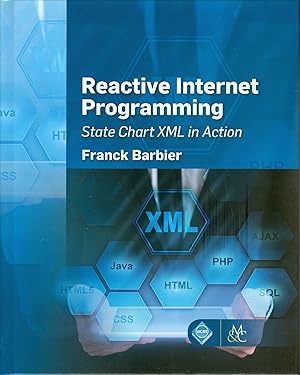Is Internet software so different from “ordinary” software? This book practically answers this question through the presentation of a software design method based on the State Chart XML W3C standard along with Java. Web enterprise, Internet-of-Things, and Android applications, in particular, are seamlessly specified and implemented from “executable models.”
Internet software puts forward the idea of event-driven or reactive programming, as pointed out in Bonér et al.’s “Reactive Manifesto” (http://www.reactivemanifesto.org). It tells us that reactiveness is a must. However, beyond concepts, software engineers require effective means with which to put reactive programming into practice. This book’s purpose is to outline and explain such means.
The lack of professional examples in the literature that illustrate how reactive software should be shaped can be quite frustrating. Therefore, this book helps to fill in that gap by providing in-depth professional case studies that contain comprehensive details and meaningful alternatives. Furthermore, these case studies can be downloaded for further investigation.
Internet software requires higher adaptation, at run time in particular. After reading Reactive Internet Programming, the reader therefore will be ready to enter the forthcoming Internet era.
“If I may harken back to my initial disclaimer, namely, that I’m not an Internet programmer, I wish to say that in 1988 (in an aerospace venue) I urged my employer to purchase Harel’s StateMate tool. The proverbial bean counters did their job in rejecting the request. I’m happy to see this excellent book’s arrival, along with its open-source superstructure. It is very much worth reading, both for theory and for real-world application to complex event-driven systems.” – George Hacken for ACM Computing Reviews




